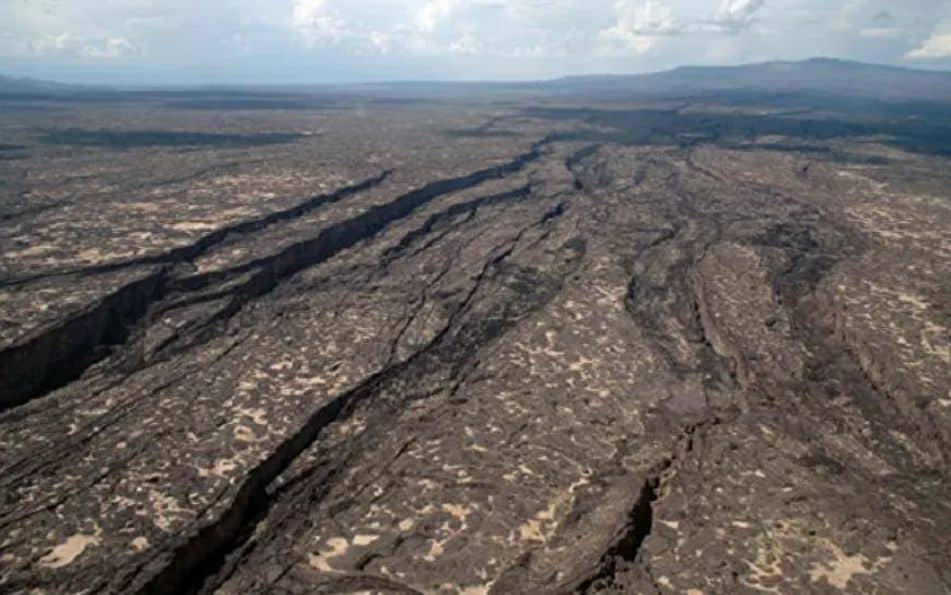Based on new measurements from satellites, geophysicists predict the formation of a new ocean in East Africa, one of the most geologically unique places on the planet.
The Earth’s crust is made up of a dozen large tectonic plates, which constantly crush, rise, slide, or separate from each other.
For the past 30 million years, the Arabian plate has been moving away from Africa, a process that created the Red Sea and the Gulf of Aden. But the East African Somali plate is also moving away from the Nubian plate, spreading along the Great Rift Valley, which stretches across Ethiopia and Kenya.
In this way, three tectonic plates are moving very slowly away from each other. This complex geological process will eventually divide Africa into two parts and create a new ocean basin in about five to 10 million years, scientists say.
The parting line is located in the Afar region of East Africa, in one of the hottest places on Earth.
For now, the most obvious evidence is a 56-kilometre -long crack in the Ethiopian desert that opened in 2005. The crack that formed in just a few days would be equivalent to several hundred years of tectonic plate movement, Cynthia Ebinger said, a geophysicist at Tulane University in New Orleans quoted by NBC news.
Scientists studied satellite and GPS data and managed to calculate how the ground moves over time with precision down to a few millimetres per year.
Each plate boundary in the Afar region is extending at different speeds, ranging from five to 25 millimetres per year.
However, the combined forces of these separation plates create what is known as a ridge system in the middle of the ocean, where a new ocean will eventually form.
“The Gulf of Aden and the Red Sea will flood the Afar region and the Great Rift Valley of East Africa and become a new ocean, and that part of East Africa will become a separate small continent,” predicted Ken Macdonald, marine geophysicist and professor emeritus at the University of California, Santa Barbara.
As the plates separate, the material from the depths of the Earth moves towards the surface and forms an oceanic crust on the ridges.
“We can see that the oceanic crust is beginning to form because it is clearly different in composition and density from the continental crust,” explained Christopher Moore, a PhD student at the University of Leeds in the UK, adding that this It is the only place on Earth where you can study how the continental rift turns into an ocean rift.
